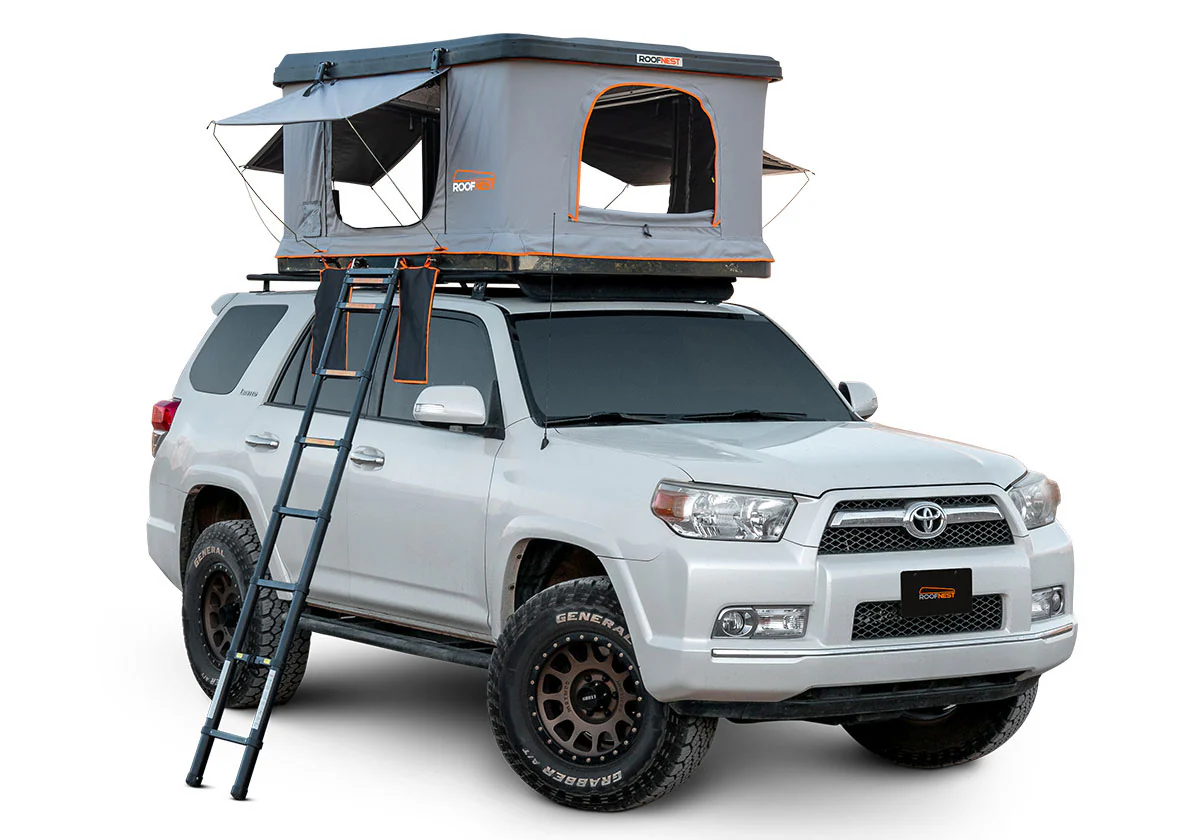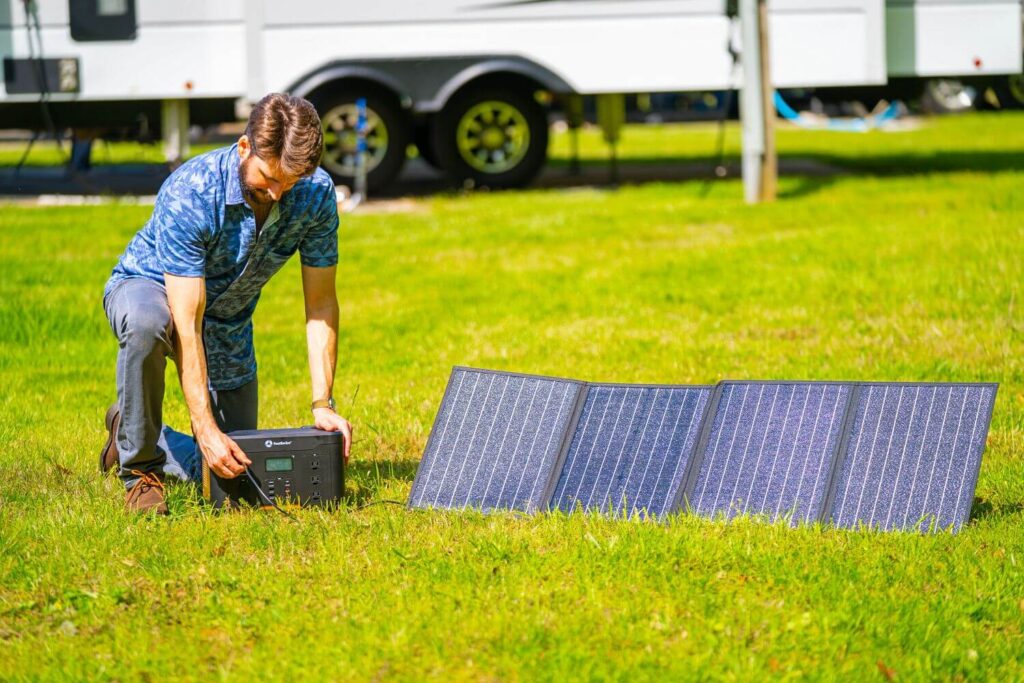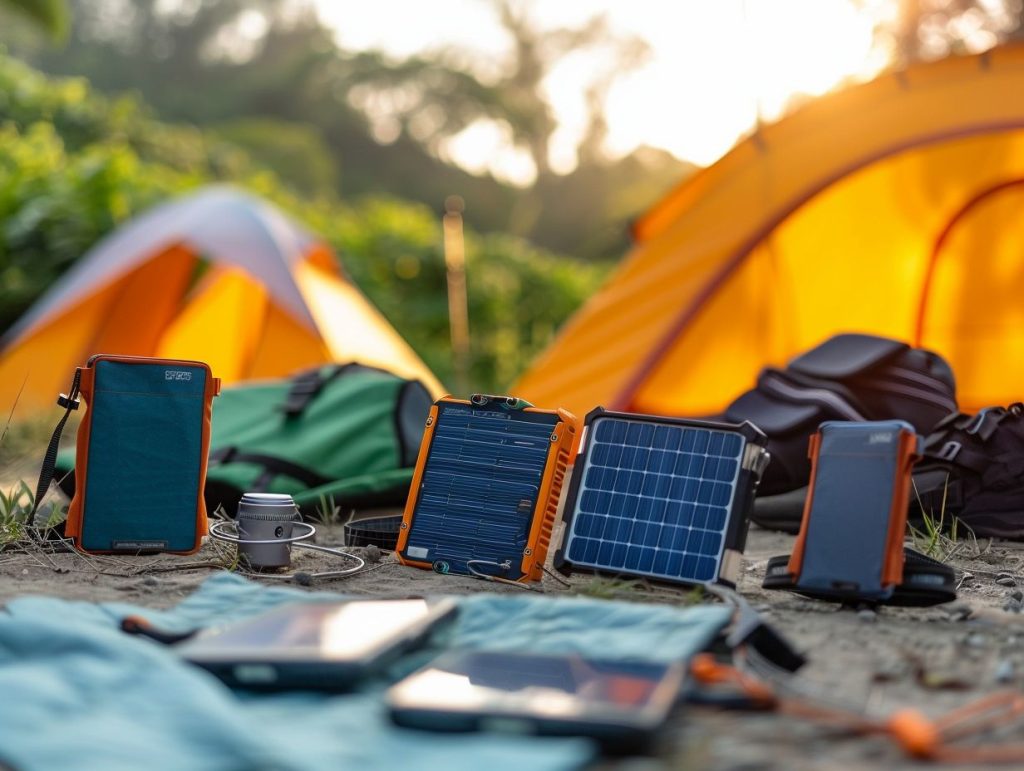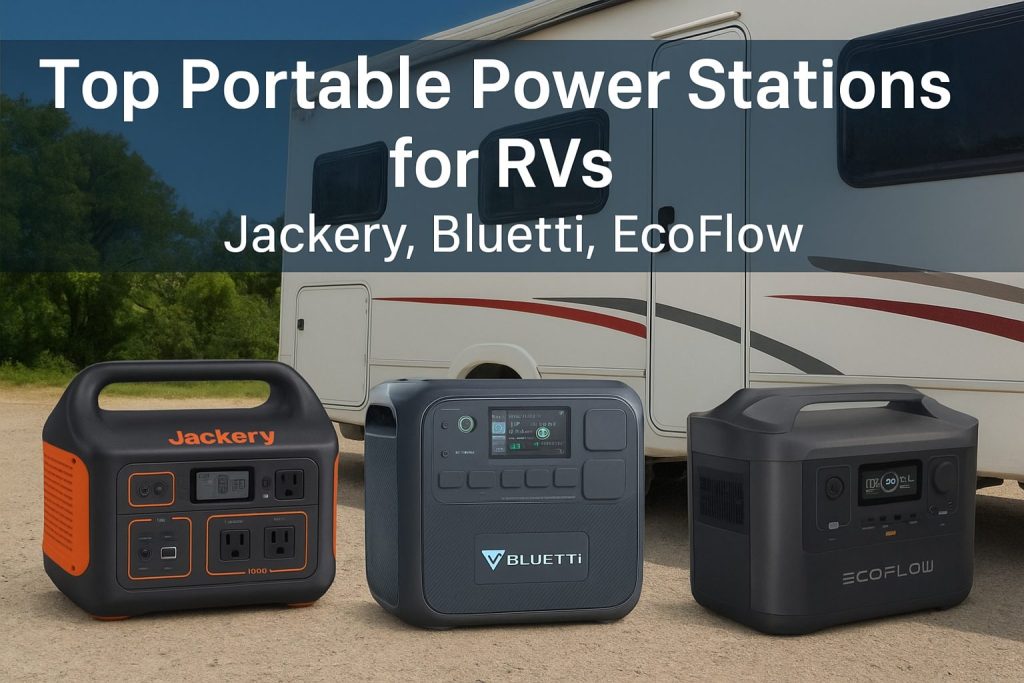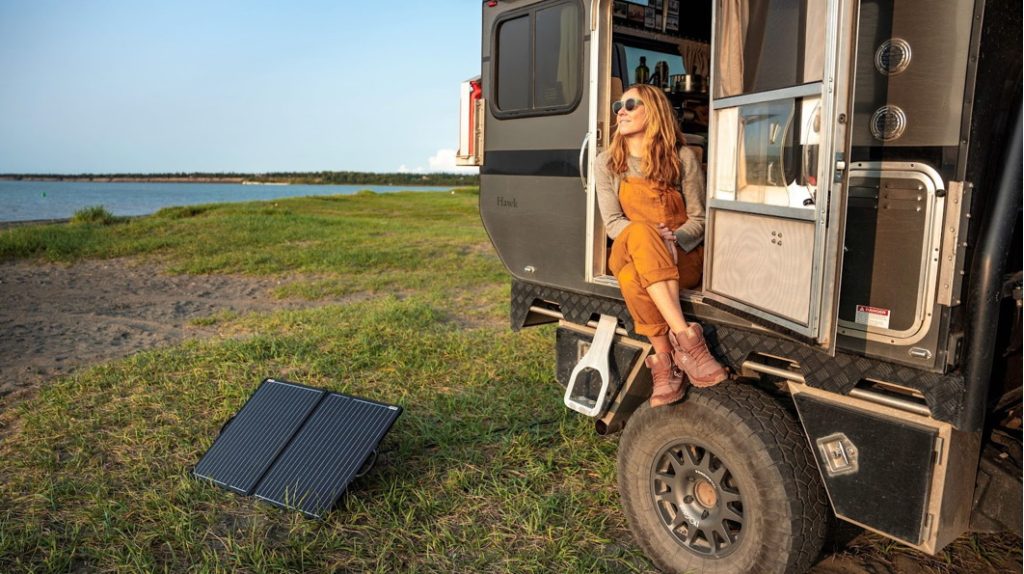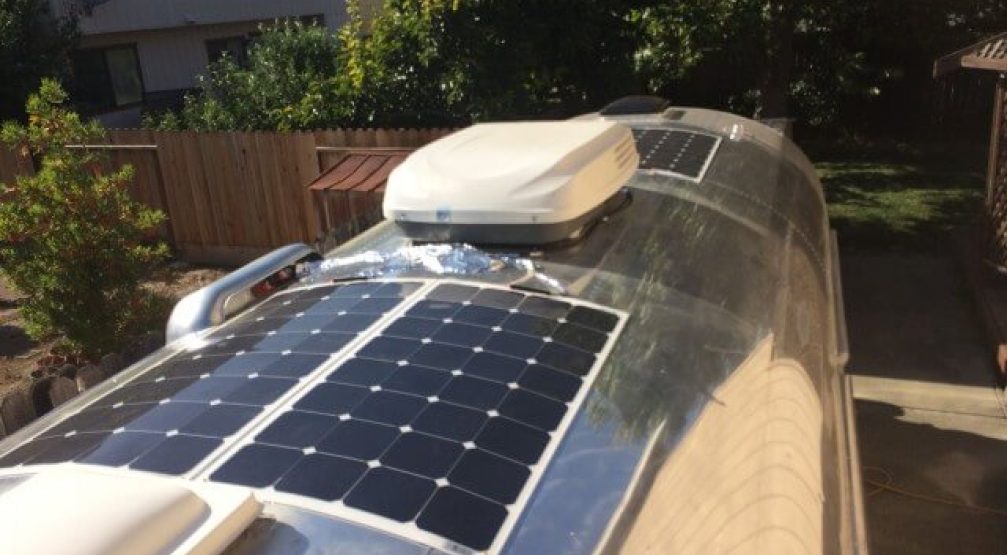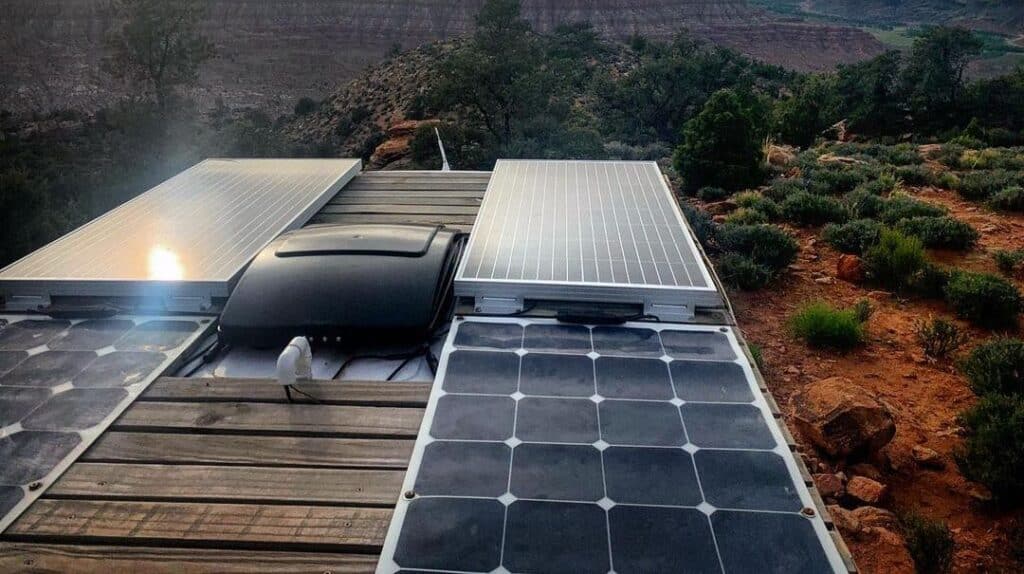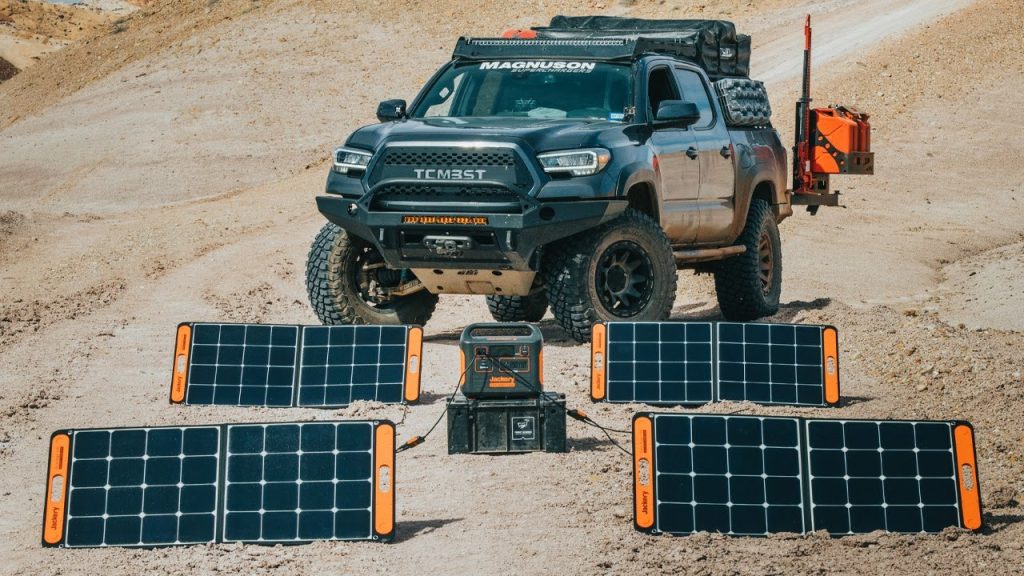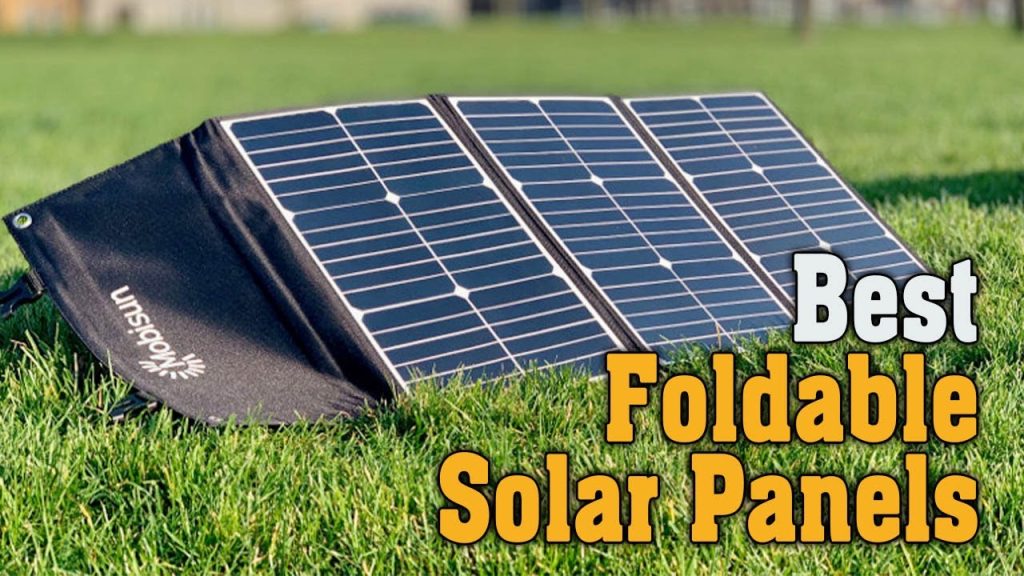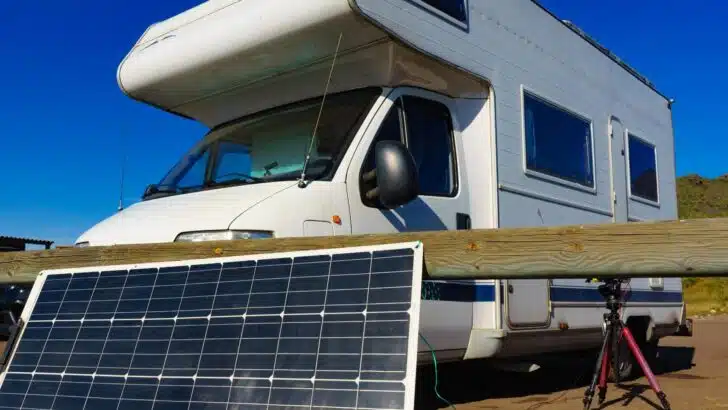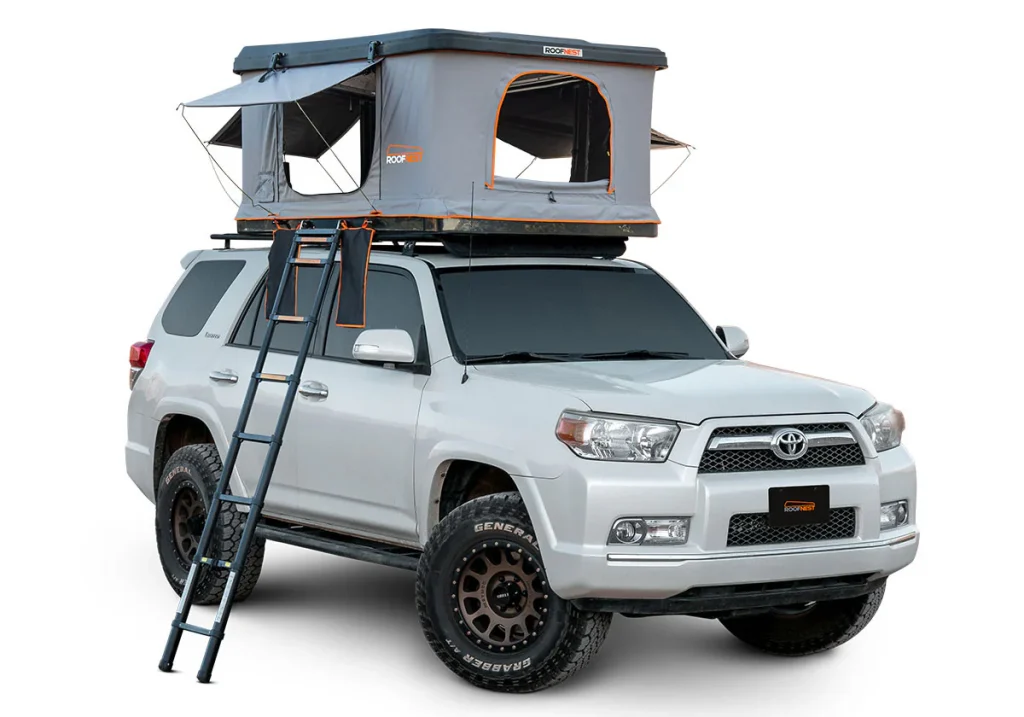For overlanders, campers, and road trippers, time is everything. After a long day of driving off-road or exploring the backcountry, the last thing you want is to spend 20–30 minutes struggling with tent poles, rainfly covers, and guy lines. That’s where pop-up roof tents make a big difference. Designed with hydraulic or gas strut systems, these tents can be set up in under a minute—sometimes with just a single touch.
Traditional ground tents often come with challenges: uneven terrain, wet or muddy conditions, and exposure to wildlife or insects. Even standard soft-shell rooftop tents, while convenient, can take several minutes to deploy and pack away. Pop-up roof tents solve these real-world problems by combining speed, comfort, and protection in one package. With a hard-shell design, they offer superior durability, better aerodynamics on the road, and higher waterproof ratings compared to many soft-shell options.
For anyone who values quick setup, all-weather performance, and comfort at camp, pop-up roof tents are quickly becoming the go-to choice for overlanding and extended outdoor adventures.
What Are Pop-Up Roof Tents?
A pop-up roof tent is a type of rooftop tent designed to set up almost instantly using hydraulic arms, gas struts, or similar assisted mechanisms. Unlike traditional ground tents that require poles and stakes—or even soft-shell rooftop tents that need unfolding—these hard-shell models “pop up” in seconds with minimal effort.
The tent is stored inside a durable hard shell, usually made of aluminum or reinforced polymer, which doubles as protection while driving. When you arrive at camp, you simply unlock the latches, and the assisted lift system raises the tent into place. Inside, you’ll usually find:
-
A built-in mattress (often high-density foam for comfort).
-
Weather-resistant fabric with waterproof ratings (commonly 3000–8000 mm).
-
Features like blackout panels, ventilation windows, and power ports.
-
An integrated ladder for easy entry and exit.
Why They Stand Out
-
Speed & Convenience: Setup and takedown often take less than a minute.
-
All-Weather Protection: With hard-shell exteriors, they perform better in rain, wind, and even snow.
-
Durability: Aluminum shells and aerospace-grade hardware make them more rugged than soft-shell tents.
-
Comfort: Elevated sleeping position keeps you off the ground and away from mud, uneven terrain, and critters.
For overlanders and frequent travelers, pop-up roof tents strike a balance between quick deployment, comfort, and durability, making them one of the best upgrades for an adventure-ready vehicle.
7 Best Pop-Up Roof Tents for Overlanders (2025 Picks)
#7 TOPOAK Galaxy Pro: Open in 30s!

Have ever wished your rooftop tent popped open like magic and held up in torrential downpours? That’s what TOPOAK promises with its Galaxy Pro. With hydraulic struts, this tent springs into shape in about 30 seconds, floods of built-in ventilation, and an 8000 mm waterproof rating so rain doesn’t sneak in. Whether you’re escaping cold nights or blazing sun, its hard-shell aluminum build and moisture-wicking fabrics give you peace of mind—and warm bones.
But more than just weather defense, the Galaxy Pro is built for comfort. It boasts a 3-layer mattress system, mesh windows, skylight, and a design that expands the interior by ~35% over regular hardshell “wedge” tents. Sculpted U-bar “kick-out” front gives you more headroom. It’s heavy (about 176 lb), but if you want off-grid comfort up top, this might be your best choice.
Specifications
- Brand: TOPOAK
- Open Size: 83″ × 56″ × 53″
- Closed Size: 83″ × 56″ × 8″
- Weight: 176 lb
- Waterproof Rating: 8000 mm rainfly; moisture-wicking fabric
- Mattress: Three-layer (high-density foam + quick-dry pad + moisture barrier)
- Occupancy: 2 persons
- Seasons: 4-season
Pros
- Very fast setup (hydraulic struts)
- Excellent waterproofing (8000 mm)
- Spacious interior with skylight and kick-out front
- Comfortable mattress system
Cons
- Heavy: requires strong roof bars
- Big profile when closed; wind drag
- Price likely high
#6 Naturnest Polaris Plus: Black-Out Luxury & 660-lb Load!

Want a rooftop tent that keeps the bright sun and prying eyes out yet can hold heavy loads like your gear stash inside? Naturnest Polaris Plus gives you a 3.5″ water-resistant shell + blackout fabric that blocks 99% of light. It also claims to handle ≈ 660 lb of load, so you can pack wisely without tipping over or stressing your roof rack. The aluminum hard shell and stainless support rods mean it’s built to last—and brave harsh nights.
Add in creature comforts: thick mattress with condensation pad, felt lining inside to reduce moisture, LED lights, USB port, ladder + ladder bag, storage pockets & shoe bags. Though it carries weight (~181 lb), it gives you modern design touches that rival much more expensive options. If you want both blackout privacy & rugged strength, this tent tries to cover both.
Specifications
- Brand: Naturnest
- Open Size: ~82.6″ × 52″ × 59″
- Closed Size: ~7-8″ height (varies)
- Weight: ~181 lb
- Load Capacity: ~660 lbs
- Waterproof / Fabric: 310G polyester w/ coating, UV50+, blackout
- Mattress: Thick foam + condensation pad
- Occupancy: 2 persons (3 tight)
- Shell: Aluminum hard shell + stainless rods
Pros
- Excellent load rating (~660 lb)
- Blackout fabric: blocks 99% of light
- Good weatherproofing + UV protection
- Many comfort touches (LED, USB, storage, mattress layering)
- Durable build (aluminum shell + stainless rods)
Cons
- Heavy to carry and install
- Likely expensive; needs strong roof racks
- Large closed profile; clearance issues possible
- Mainly for 2 people (3 is tight)
#5 WildFinder 3-Person Hard-Shell: Heavy-Duty Comfort Over Your Head!

Want a rooftop tent tough enough for cold alpine nights and comfy nights under the stars? WildFinder’s hard shell tent promises both. It’s built from aircraft-grade aluminum and claimed 4-season polyester fabric. With a waterproof rating of 5000 mm, it resists heavy rains, and blackout materials help you sleep past sunrise. The full accessories — ladder, multiple mattress layers, condensation pad, LED lights, organizers — make it more than just shelter; it’s camp luxury.
It’s strong, but not light. Weighing over 160 lb (~163–169 lb depending on version), it requires a sturdy roof rack and strong roof load capacity. If your vehicle is up to it, you get a roomy interior (fits 2–3 people depending) and generous floor space of about 83 by 52 inches. But get ready for bulky closed height, harder handling when driving, and setup that might take more effort than the easier tents.
Specifications
- Brand: WildFinder
- Open Size / Floor Dimensions: 83″ L × 52″ W × ~59″ H
- Closed Size / Height: ~9″
- Weight: ~163–169 lb
- Occupancy: 2–3 people
- Seasons: 4-season design
- Waterproof Rating: 5000 mm fabric/rainfly
- Included Accessories: 7.5 ft telescoping ladder, LED strip, mattress, organizers, mesh windows
Pros
- Durable aircraft-grade aluminum shell
- Large sleeping space for 2–3 people
- Good waterproofing (5000 mm) and ventilation
- Accessory package: ladder, LED, organizers included
- Condensation pad and blackout features
Cons
- Heavy: may stress roof and bars
- High price + shipping costs
- Bulky closed profile; wind noise & fuel usage
- Setup/take-down more involved vs. lighter RTTs
#4 BENEHIKE Bivvyy V2: Side-Open Castle in 1 Minute!

Imagine opening your tent in the time it takes to pour a coffee. That’s the claim with the Bivvyy V2 — a side-opening hard-shell rooftop tent that pops open in just about a minute. With a polymer/ABS outer shell designed for aerodynamics and rugged weather protection, this is aimed at folks who want both speed and comfort. Rainflys, waterproof materials, stainless/aerospace-grade hardware: it doesn’t skimp. If you’re camping with family or more gear, this might be your tent. The sleeping floor is 83″ × 65″, enough room for 3–4 people depending how tightly packed. High waterproof ratings, thick fabric, heavy-duty ladder and gear all suggest it’s made for serious use. BUT with that comes heavyweight (171 lb) and higher cost and more load on your racks.
Specifications
- Brand: BENEHIKE
- Floor/Open Size: 83″ L × 65″ W × 53″ H
- Weight: ~171 lb
- Occupancy: 3–4 people
- Seasons: 4-season capable
- Waterproof: 600D rip-stop body; 420 Oxford rip-stop rainfly + cotton blend (PU 4000 mm)
- Frame/Shell: Polymer/ABS hard shell + stainless & aerospace-grade hardware
Pros
- Very quick setup; side-opening design improves usability
- Spacious floor size, fits 3–4 people
- Durable materials + solid waterproofing
- Hard shell protection for harsh weather
Cons
- Heavy: adds load to vehicle roof & racks
- Bulky when closed; reduces fuel efficiency
- Higher cost vs. lighter options
- Side-opening complexity: more parts, more wear points
#3 JOYINRUTE Alum Pop-Up: Two-Person Fortress Over Your Car!

Want a rooftop tent that feels solid and built like a compact stronghold? The JOYINRUTE hard-shell pop-up does just that. With aircraft-grade aluminum shell, 4 heavy-duty hydraulic support rods, and a blackout 320G polyester skin with nearly 5000 mm water resistance, it keeps rain, wind, and sun out. It boasts 4 big windows with mesh & wind flaps, so you can catch the breeze but shut out bugs and light. Perfect for two people seeking comfort and protection off the ground.
It’s not delicate though — this thing is heavy. At about 178 lb (~80 kg), closing height of ~39.4″ when open, it takes real roof capacity to carry. But in return you get cushy interior amenities: built-in mattress and condensation pad plus loads of accessories like ladder, storage bags, LED strip, and internal pockets. For serious rooftop campers, it might be worth lugging.
Specifications
- Brand: JOYINRUTE
- Open Size: 83″ L × 51.8″ W × 39.4″ H
- Occupancy: 2 persons
- Seasons: 4-season design
- Weight: ~178 lb (~80–82 kg)
- Floor Width: ~47.27 in
- Waterproof Rating: ~5000 mm; 320G polyester blackout coating; windproof up to Grade-6
- Included Accessories: 7.5 ft telescoping ladder, ladder organizer, mattress, condensation pad, storage bags, LED strip, shoe organizers, mesh windows
Pros
- Very strong build (aluminum shell + hydraulic supports)
- Good waterproof & windproof protection
- Blackout lining adds privacy & light control
- Rich accessory kit (ladder, LED, organizers, mattress)
- Comfortable for 2 with built-in mattress
Cons
- Heavy — requires strong roof load capacity
- Bulky when closed; thick profile impacts aerodynamics
- Likely higher shipping & installation cost
- Designed strictly for 2 people — 3 would be tight
#2 Smittybilt SB2986: 661-lb Beast, Pops Up in Seconds!

Looking for a rooftop tent that can take almost anything you load on top—including gear, people, and a heavy mattress? The Smittybilt SB2986 delivers with a static load capacity of 661 lbs. Add to that gas-assisted struts, a low-profile aerodynamic shell, and a closed height of about 7.1 inches—you get a tent that rides sleek on the road yet opens into a spacious shelter. LED lighting, mesh storage pockets, and a thick 2.5-inch high-density foam mattress turn this into luxury in the sky.
On the flip side, it’s girthy. When open, it stands ~44.9″ high, so you’ll need clearance under trees etc. It isn’t lightweight, so lifting & mounting take effort. But if you want a rooftop tent that blends strength, comfort, and durability—and can deal with full gear loads—this one looks like a strong contender.
Specifications
- Brand: Smittybilt
- Open Size: 84.7″ L × 55.3″ W × 44.9″ H
- Closed Size: 84.7″ × 55.3″ × 7.1″ (closed height)
- Load Capacity: 661 lbs (static)
- Mattress: 2.5″ high-density foam
- Sleeps: 2-3 people
- Warranty: 5 years
- Shell Material: Lightweight aluminum, low profile, aerodynamic
- Ladder: Extra-long telescoping ladder (~90.5″)
Pros
- Very high load capacity (661 lbs)
- Low closed height (7.1″) reduces drag
- Comfortable mattress + LED lighting + storage
- Universal fitment with a solid 5-year warranty
Cons
- Heavy overall weight; mounting takes effort
- Pricey compared to lighter options
- Bulky when open (44.9″ high)
- Extra weight can impact fuel economy & suspension
#1 Adventurer Pro 4-Season: Luxe Shell & Side-Awning Upgrade!

If you want something that looks like next-level overlanding gear, the Adventurer Pro steps up. With a rigid hard shell, side awnings, built-in USB/power ports, replaceable rain fly & mesh, plus optional accessories like luggage racks and solar panel compatibility, you get to camp with style and function. It’s made for users who want more than a basic tent: you get upgrades and modular parts so you can adapt it.
It handles weather well—its shell gives protection, the fabric is heavy-duty, and waterproof layers keep the storms out. On top of that, when it comes with a thick foam mattress and good ventilation, it doesn’t skimp on comfort. The trade-offs? Bulk, weight, and likely higher price. But if you want premium gear over barebone, this is the kind of tent that feels premium.
Specifications
- Brand: Adventurer Pro
- Occupancy: 2–3 persons
- Shell Material: Hard shell aluminum or composite
- Mattress: Thick foam mattress included
- Accessories: USB/power outlet, side awning, luggage racks, LED lighting (varies)
- Waterproofing: Heavy waterproof fly, strong seams, multi-layer protection
- Seasons: 4-season capable
Pros
- Premium build & features: awning, power ports, racks
- Thick foam mattress + insulation
- Stylish design with modular upgrades
- Excellent weather protection
Cons
- Heavy and bulky; harder to mount & transport
- High cost compared to simpler tents
- Closed profile may cause wind drag
- More parts = more maintenance
| Product | Setup Speed | Weight | Occupancy | Waterproof Rating | Stand-Out Features |
|---|---|---|---|---|---|
| TOPOAK Galaxy Pro | ~30s (hydraulic struts) | ~176 lb | 2–3 people | 8000 mm | 3-layer mattress, skylight, kick-out U-bar for extra headroom |
| Naturnest Polaris Plus | ~1 min | ~181 lb | 2 people (tight for 3) | 310G polyester + blackout, UV50+ | Blackout privacy fabric, 660 lb load capacity, LED + USB ports |
| WildFinder Hard Shell | ~1–2 min | ~163–169 lb | 2–3 people | 5000 mm | Aircraft-grade aluminum, 4-season, LED + organizers included |
| BENEHIKE Bivvyy V2 | ~1 min (side-opening) | ~171 lb | 3–4 people | PU 4000 mm | Side-opening design, 600D ripstop fabric, aerospace-grade hardware |
| JOYINRUTE Hard Shell | ~1 min (hydraulic rods) | ~178 lb | 2 people | 5000 mm | Aircraft-grade aluminum, blackout 320G polyester, rich accessory kit |
| Smittybilt SB2986 | Seconds (gas-assisted struts) | Heavy (exact not always stated) | 2–3 people | Weather-sealed | 661 lb load capacity, 2.5″ foam mattress, 5-year warranty |
| Adventurer Pro | ~1–2 min | Varies by model (typically heavy) | 2–3 people | 4-season waterproofing | Side awning, USB/power ports, modular upgrades, premium build |
Buying Guide: How to Choose the Best Pop-Up Roof Tent
Investing in a pop-up rooftop tent is a big decision—these aren’t cheap, and most weigh over 160 lb, meaning your vehicle setup has to match. The right choice depends on your camping style, your car’s load capacity, and which features matter most to you. Let’s break it down:
1. Consider Your Needs
Ask yourself how you’ll actually use the tent.
-
Solo travelers or couples: A 2-person design like the JOYINRUTE is compact yet comfortable, with blackout fabric for privacy.
-
Small families or gear-heavy trips: Larger options like the BENEHIKE Bivvyy V2 (side-opening, sleeps 3–4) or WildFinder (roomy 2–3 person) give more floor space but also add weight.
-
Frequent overlanders: If you’ll camp in all conditions, the TOPOAK Galaxy Pro or Naturnest Polaris Plus offer premium waterproofing and insulation for four-season use.
2. Assess Build Quality
Build quality dictates durability and long-term value.
-
Shells: Look for aircraft-grade aluminum (TOPOAK, JOYINRUTE, WildFinder) for maximum strength, or polymer/ABS shells (BENEHIKE) if you want lighter, aerodynamic protection.
-
Fabrics: High-denier ripstop materials with strong waterproof ratings are key. For example, TOPOAK boasts an 8000 mm rating, while Naturnest uses blackout 310G polyester with UV protection.
-
Hardware: Stainless or aerospace-grade hardware (BENEHIKE, Naturnest) ensures stability in high winds.
3. Ease of Installation & Setup
One of the main reasons to buy a pop-up is convenience.
-
Fastest setups: The TOPOAK Galaxy Pro pops open in ~30 seconds; Smittybilt SB2986 also deploys quickly with gas struts.
-
Side-opening usability: The BENEHIKE Bivvyy V2 spreads out more floor space and gives easier access, but has more moving parts.
-
Bulk factor: Heavy tents (JOYINRUTE, Naturnest) can be harder to mount on your vehicle and may affect clearance.
4. Budget & Value
Prices vary widely depending on features and brand.
-
Premium picks: Adventurer Pro and Naturnest Polaris Plus come with extras like blackout privacy, USB ports, and awning options—great if budget isn’t tight.
-
Mid-range durability: WildFinder and JOYINRUTE balance cost with solid aluminum builds and good waterproofing.
-
Established brand value: Smittybilt SB2986 combines brand trust, warranty, and a high load rating, which justifies the cost for many buyers.
-
Best bang for comfort vs price: TOPOAK Galaxy Pro offers a thick mattress and excellent waterproofing, but note it’s heavy.
Final Verdict
Here are my picks among your listed tents, for different priorities. These are based on the specs and trade-offs you provided.
| Category | Best Choice | Why It Wins / Trade-Offs |
|---|---|---|
| Best Overall Pick | TOPOAK Galaxy Pro | It balances almost everything: super-fast setup (~30 seconds), high waterproof rating (8000 mm), solid build with aluminum shell, very good comfort (3-layer mattress, ventilation, skylight). Yes it’s heavy and costs more, but if your vehicle & roof rack can handle it, you get excellent performance in most conditions. |
| Best Budget Option | WildFinder Hard Shell Rooftop Tent | While not cheap, among the tents listed it gives the best mix of price vs features: aluminium shell, good waterproofing (~5000 mm), decent accessories, room for 2-3 people. Less premium than some of the luxury pieces, but solid value. (If you can find a deal or sale, it becomes very compelling.) |
| Best Premium Choice | Naturnest Polaris Plus | For someone who wants top-level features: the load capacity (~660 lb), blackout fabric, LED/USB ports, high-end finishes, etc. It’s expensive, heavy, large—but if money / mounting capacity are less of a constraint, this feels like luxury + ruggedness. |
FAQs
1. Will these rooftop tents affect my fuel efficiency?
Yes — any rooftop tent adds weight and increases aerodynamic drag, both of which can reduce fuel economy. Heavier, bulkier tents (like some of the aluminum hard-shells) will have a greater effect. Keeping speed moderate, using aerodynamic shells, and removing or reducing overhangs when possible help minimize the drag.
2. How important is the waterproof rating? What rating is “good enough”?
Waterproof rating (often measured in mm hydrostatic head) tells you how much water pressure the fabric can resist before leaking. Ratings around 3000 mm+ are generally considered good for heavy rain and harsh weather. For tents used in mild climates, somewhat lower ratings may suffice, but higher values give more peace of mind. Also check seam sealing, zippers, and whether windows/vents can fully close.
3. How much weight can my roof and rack safely carry?
You need to check both dynamic and static load capacities:
-
Dynamic load = what the roof rack can carry while driving.
-
Static load = what it can bear when parked (with the tent mounted and people inside). Many hard-shell RTTs weigh 70-90 kg or more, and once you add two or more people plus gear, total weight adds up fast. Always ensure your vehicle’s roof, the rack system, mounting hardware, and suspension are rated for that load.
4. How durable are these tents in different seasons?
Hard-shell pop-ups, aluminum or polymer shells, high-denier / ripstop fabrics, strong hardware, and good ventilation help with durability in all seasons. Some tents mentioned (TOPOAK, BENEHIKE, WildFinder) are 4-season rated. However, extreme cold, snow, or strong winds can challenge any rooftop tent; proper anchoring, closure of windows, sealing, and maintenance matter a lot.
5. What are the trade-offs among weight, comfort, and price?
-
Heavier tents often offer thicker mattresses, more built-in accessories (LEDs, organizers, windows), and stronger waterproofing. But heavier = more strain on racks / suspension, harder to install, more effect on fuel economy.
-
Lighter tents may cost more per pound of features (you may sacrifice some comfort, fewer extras).
-
Price tends to go up with shell quality, waterproof rating, accessories, brand, warranty, and size. So pick what features matter most to you.
6. How long will these tents last, and what maintenance is needed?
With good care, a hard-shell rooftop tent can serve many seasons. Key maintenance items include:
-
Regularly inspecting and resealing seams/zippers if needed.
-
Ensuring fabric coatings remain intact (reapply waterproofing treatments if needed).
-
Drying out wet fabric before packing (to prevent mildew, rot).
-
Keeping hardware well-maintained (hinges, struts, gas springs).
Read More: Top Soft Shell Roof Top Tents for SUVs & Jeeps (2025 picks)

